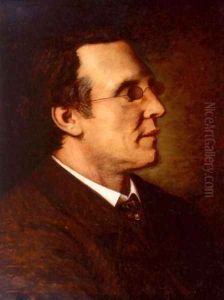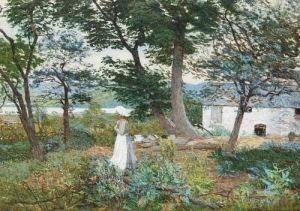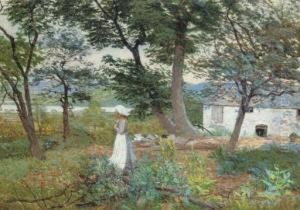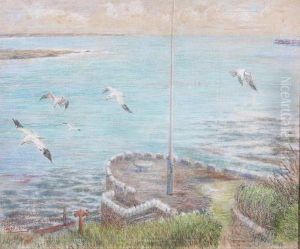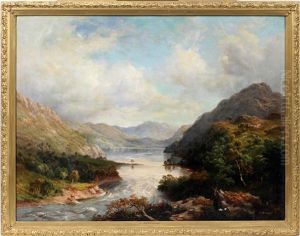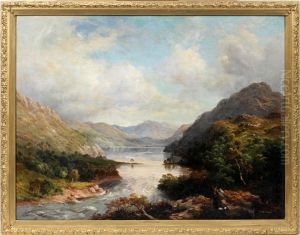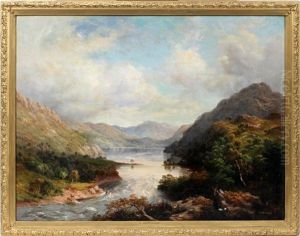Harold Steward Rathbone Paintings
Harold Steward Rathbone was born in 1858 in Liverpool, England, into a wealthy and prominent family. His father, Philip Rathbone, was a successful merchant and his mother, Elizabeth Greg Rathbone, was part of the influential Greg family, known for their social reform work and for founding the Quarry Bank Mill in Cheshire, which is now a museum. Educated at home and then at a private school, Rathbone was exposed to art and culture from an early age, which would shape his future career as an artist and designer.
Rathbone is best known for his association with the Della Robbia Pottery in Birkenhead, which he founded in 1894. The pottery was named after the famous Italian Renaissance sculptor Luca della Robbia, who was known for his glazed terracotta works. Rathbone was deeply inspired by the Arts and Crafts movement and the philosophies of William Morris, which emphasized the importance of craftsmanship and design as well as the social aspects of production.
The Della Robbia Pottery became known for its distinctive ceramic pieces, often featuring bold relief designs and a characteristic glaze. Rathbone and his team, which included talented artists like Conrad Dressler and Charles Passenger, combined traditional English styles with influences from Italian Renaissance art. The pottery produced a wide range of items, including tiles, vases, and architectural decorations, which were exhibited and sold both in Britain and abroad.
Despite the artistic success of the pottery, it struggled financially and Rathbone's own financial investments in the business took a toll on his personal wealth. The pottery closed in 1906, after which Rathbone continued to work on various artistic projects, including painting and writing poetry. He was also active in local politics and philanthropy in Liverpool, following in the footsteps of his family's tradition of social service.
Harold Steward Rathbone passed away in 1929, leaving behind a legacy as an artist who bridged the gap between the decorative arts and fine arts during the late 19th and early 20th centuries. His work with the Della Robbia Pottery remains a significant contribution to the Arts and Crafts movement in England, and his efforts to create beautiful, handcrafted objects continue to be appreciated by art historians and collectors today.
